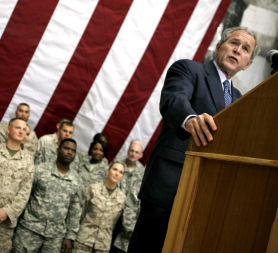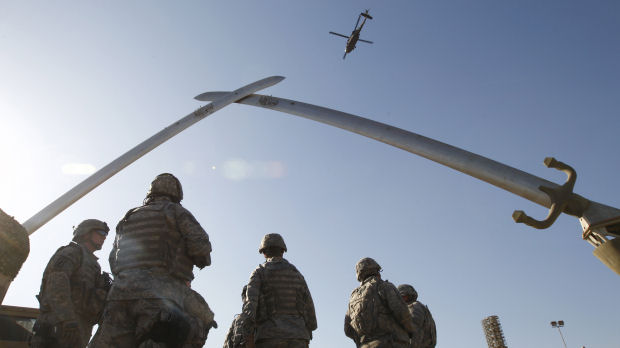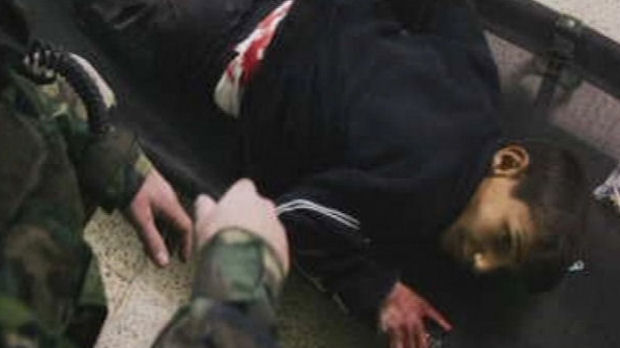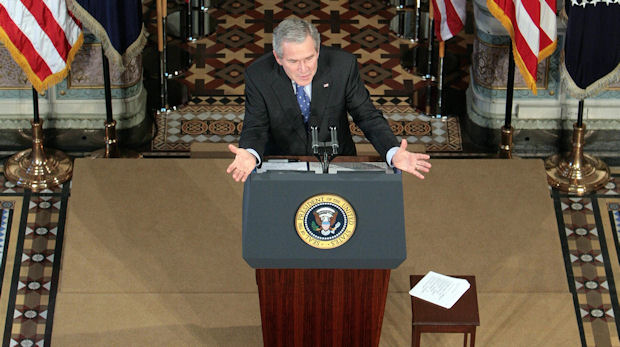Iraq war files ‘the Pentagon never wanted you to see’
 Alex Thomson
Chief Correspondent
Alex Thomson
Chief Correspondent
There is so much data the Channel 4 Dispatches team had to design their own computer programme to sift through it – and the results of that are truly startling, writes Alex Thomson.

It is, quite simply, the biggest single leak of secret military data in history. Around 400,000 individual US military despatches covering six years of the war and occupation of Iraq. There are just two months missing in the period covered from 2004 to 2009 and that is the period covering the operation against the town of Fallujah. Coincidence? I hardly think so. Some things were it seems, just too sensitive for even the WikiLeaks whistleblower.
There is so much data that the Channel 4 Dispatches team had to design their own computer programme to sift through this treasure trove of news The Pentagon never intended you to see.
I think these leaks move us, in the context of Iraq, into altogether new territory in some important ways.
And the results of that are truly startling. The whole point of leaked information in the public interest is that it can – must – bring to light important truths which the powers that be did not want their public to know. On this measurement this mega-leak more than makes its case.
The recent leak of some 90,000 military dispatches from the US forces in Afghanistan was startling in many ways – but in general it served to buttress what we already knew of the occupation in that country. I think these leaks move us, in the context of Iraq, into altogether new territory in some important ways.
First, the great body count issue is nailed by these emotionless logs. For years US politicians and generals stoutly maintained that they kept no account of people killed in Iraq. If genuine, these accounts would appear to expose all that as a massive and sustained lie.
Full report and video exclusive – Iraq secret war files leaked
What we get from the 400,000 or so Sigacts – significant activity reports – are a day by day steady accumulation of a body count. In fact around 109,000 human bodies over the six years. So it appears there very much was a detailed body count about who was killed – where, when, how and why. And it seems to have been clearly sanctioned via standing orders from the highest levels.
Further, this body count is carefully demarcated, as you might expect from the military, into civilian deaths and AIF KIA – anti-Iraqi forces killed in action.
That designation matters and here’s why: because you can now break down the figures they never wanted you to see and find out from the Sigacts (significant action reports) how many armed fighters were killed, as opposed to unarmed civilians.
Now that simple statistic has the potential to be be hugely damaging.

Sure enough, analysis of this brings out a second startling truth into the daylight. For we now know US forces killed more unarmed civilians than fighters in that period: around 66,000 of the 109,000 logged deaths.
How did they manage that? How could they arrive at a situation where most of the people being attacked and killed were, in fact, the people they said they had come to defend and protect?
As any soldier will tell you, this is a truly astonishing figure.
The answers lie, in good measure, in the concept of “Force Protection” which is a kind of modern-day Number One Commandment of US forces by air, land and sea. It means what it says: protect your own men in your unit or aircraft and, frankly, ask any questions much later – if at all.
So it is that when you go further into the figures you find that over 800 people were shot dead by US troops at their vehicle checkpoints. Yet, of those, 681 – over eighty percent – turned out to be unarmed civilians.
As any soldier will tell you, this is a truly astonishing figure. True, Iraqi fighters have used civilian cars as mobile suicide bombs to attack checkpoints repeatedly so soldiers are understandably jumpy. But that said, this figure really does take some explaining away. Force Protection perhaps goes some way to do so because US forces Rules of Engagement clearly mean in effect (if not in the letter): if in doubt- take them out.

Take the case of Camille and Hussein Hassan who were returning in a hurry one night in northwestern Iraq because they wanted to beat the coming curfew. For whatever reason the US forces at the checkpoint that night say their car failed to stop when clear warnings were given. Both were shot dead and the US Sigact left it at that.
In fact there were six children in their car that night. Eleven-year-old Rakim was hit by a bullet in the spine and will now be paralysed for the rest of his life.
The Sigact states that the US army offered the family $2,500 for each of the dead parents and the same amount for the destroyed car.
It is simply one example of many, many in these Sigacts. Fog of war?
Understandably jumpy soldiers, at night, faced with a car which did not stop and could have been a suicide bomber? Of course all of this is true to understanding the reality that night. But the sheer numbers here beg serious questions about force protection and US army procedures.
You cannot help noticing that the British in southern Iraq, well versed in roadblocks through years of experience in Northern Ireland, did not have this kind of attrition in and around Basra. It was less violent there in general, it is true, but the methods and rules of engagement differ and it is telling.
Secret war files: Afghanistan to Iraq – special report
US Pentagon statement:
We deplore WikiLeaks for inducing individuals to break the law, leak classified documents and then cavalierly share that secret information with the world, including our enemies.
We know terrorist organizations have been mining the leaked Afghan documents for information to use against us and this Iraq leak is more than four times as large. By disclosing such sensitive information, WikiLeaks continues to put at risk the lives of our troops, their coalition partners and those Iraqis and Afghans working with us.
The only responsible course of action for Wikileaks at this point is to return the stolen material and expunge it from their websites as soon as possible. We strongly condemn the unauthorized disclosure of classified information."
By air things get no better in the picture offered by the Sigacts. Time and again large numbers of civilians are unemotionally written off as dead after airstrikes. Often the pilots appear genuinely convinced they are firing at fighters or at buildings where they may be hiding alongside civilians.
But not always. In the notorious incident seen on YouTube where a US Apache helicopter strafes a group in a street, injuring two children and killing two Reuters journalists, the pilot then continues, apparently knowing that some civilians have been hit, from the radio traffic.
He then asks to fire a missile into another building nearby. Permission is granted. As he prepares a civilian walks by the house completely oblivious and seemingly totally innocent. It is certainly this man’s last seconds of life.
What kind of law is it that says you cannot surrender to a US military helicopter?
The missile is “delivered” as they say in airforce circles.
Equally we see cockpit video where identified fighters exit their vehicles with arms raised in what clearly appears to be the internationally known signal for surrender – arms high in the air.
It makes no difference. Indeed in one instance, a helicopter crew actually ask what to do because the two men in his sights are clearly trying to surrender. A radio message comes back saying that a lawyer – yes lawyer – says they cannot surrender to a US helicopter and they can engage.
They fire one Hellfire missile at the two men who are killed instantly.
What kind of law is it that says you cannot surrender to a US military helicopter? By what legal notion has surrender on the battlefield now become legally impossible if the vehicle taking said surrender happens to be an American helicopter? Such questions would seem in need of some urgent answers now from Washington.
Iraq war files: Apache Hellfire victims

Back on ground level, it is not just the killing of unarmed civilians or fighters who apparently or actually wish to surrender, but the treatment, but the treatment of prisoners that is laid bare.
Even after Abu Graibh when the notorious pictures of prisoner abuse first emerged in 2004, come report after report of US soldiers and marines assaulting prisoners, forcing them to dig for home-made bombs and mistreating them in other ways.
Again, all of it carefully noted down in these Sigact reports.
America and Britain invaded Iraq, in part, to stop Saddam Hussein’s brutality to his own people. So Iraqis did not, in the words of Tony Blair, have to fear the “knock at the door in the dead of the night” any longer.
Iraq’s secret war logs: Iraqi torture
And yet these Sigact reports reveal for the first time that US forces were under orders to turn a blind eye to Iraqis torturing fellow Iraqis on a vast scale. They were told not to intervene.
Two numbered “Frag” orders – summaries of standing orders to American troops, say that if there is no US involvement in abuse of prisoners the US forces should report the incident up the line of command, but not investigate it unless explicitly ordered to do so.
And they were reporting it almost daily: beatings, electric shock torture, chopping off fingers of detainees, sodomising prisoners with various objects.
All of this carefully noted, reported and sent up the line.

Why? Because of the sheer scale and number of the reports. True, the US was trying to stay out of Iraqi affairs and let the new state find its feet. But the effect appears to have been to turn a blind eye to widespread torture and that, in the minds of many, is dangerously close to encouraging it to happen because no action would be taken.
The bitter irony being that the systematic abuse of people under Saddam Hussein was precisely the reason the United States gave for invading this country in the first place.
It appears to have come from the highest level politically. In an infamous on-camera dispute the then Chairman of the Joint Chiefs of Staff 2005 -07 Peter Pace and the then defence secretary Donald Rumsfeld publically disagreed. The soldier says US forces can and must physically stop any abuse of prisoners. Oh no, says Mr Rumsfeld – what they should do is merely report that abuse, that’s all. Though the soldier stands his ground in front of the Pentagon press corps, it appears from these secret reports that Mr Rumsfeld had his way on the ground.
The bitter irony being, in all this, that the systematic abuse of people under Saddam Hussein was precisely the reason the United States gave for invading this country in the first place.
The reality today is that there are one million war widows across Iraq. Many come to the central mortuary in Baghdad to try and find and identify the body of missing loved ones. Because of the numbers of names in these leaked secret Sigacts, that search might just get a little easier in future.
That is just one of several significant truths revealed by this sudden avalanche of hitherto secret information. In that regard, its significance is hard to underestimate.